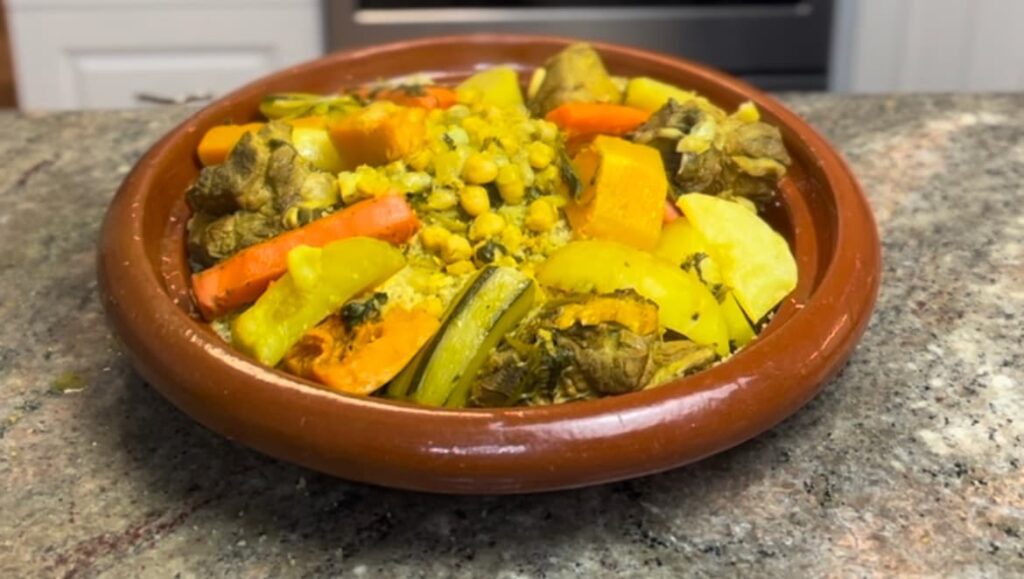Welcome to Food Feuds, where we rate similar dishes from different countries to figure out who does it better!


Traditionally, couscous is made from coarsely ground wheat or barley, resulting in tiny, spherical granules that serve as the perfect canvas for absorbing all these flavors. Couscous is commonly paired with lamb meat and an assortment of vegetables like zucchini, carrots, butternut squash and potatoes. It is usually served in a tagine and families and friends gather around a communal couscous platter, sharing not only food but also the warmth of togetherness.
A tagine refers to both a North African cooking vessel and the slow-cooked stew-like dish prepared in it. The cooking vessel, known as a tagine, is characterized by its unique design, featuring a shallow, circular base and a conical or dome-shaped lid.
Traditionally made from clay, the tagine’s design allows for the circulation of steam during cooking, which helps in tenderizing meats and infusing the dish with aromatic flavors. However, we will be using a pot to cook most of the dishes. You can easily replace the tagine with a large plate.
This tagine was gifted to my mom from her Moroccan friend. You can easily find tagines online or at a local Arabic grocers. I found my Tunisian tagine at World Market and I have received a lot of compliments on it. I found there to be quite a selection of tagines at World Market so I suggest you check it out!
What is Moroccan Lamb Couscous?
Moroccan lamb couscous is commonly paired with a medley of vegetables such as carrots, zucchini, and chickpeas. The meat is first browned and then simmered on medium low for over half an hour. It is typically seasoned with just turmeric and ginger. I added a bundle of parsley to the stew and tied it together so I could remove it later.






What is Tunisian Lamb Couscous?
Tunisian Lamb Couscous is paired with lamb meat and an assortment of vegetables like zucchini, carrots, butternut squash and potatoes. It is drenched in a tomato based sauce that is filled with flavor. Chili peppers and harissa are also added to bring a little bit of spice.






Moroccan vs Tunisian Lamb Couscous
Sensory Analysis
- Taste/Texture: 8/10 The couscous itself was good but you have to constantly add more broth to for there to be flavor. It’s quite dry without the broth added to it. This was a very savory dish and I enjoyed the assortment of veggies on the tagine.
- Appearance: 9.8/10 The presentation of Moroccan couscous is indeed aesthetically pleasing. There’s so many veggies on the dish and it’s arranged in a beautiful way. I did find the turmeric to be overpowering and it turned most of the ingredients in this dish to a light yellow.
- Overall: 9/10
- Taste/Texture: 9.2/10 The tomato and spice added to this dish is what did it for me. It was such a power move and it elevated the dish. The tomatoes were added to the broth and then the broth was added to the couscous. The couscous just provided more flavor and it wasn’t as dry. There was tumeric added to this dish but I think the tomato paired with the tumeric flavor really nicely.
- Appearance: 10/10 The broth was pretty red so it turned a lot of the veggies red as well. On top of that the couscous appeared to be more red as well. I think that made it look a lot brighter over all. This one was really visually appealing since the colors looked more vibrant.
- Overall: 9.6/10
Winner Winner
Tunisian Lamb Couscous

